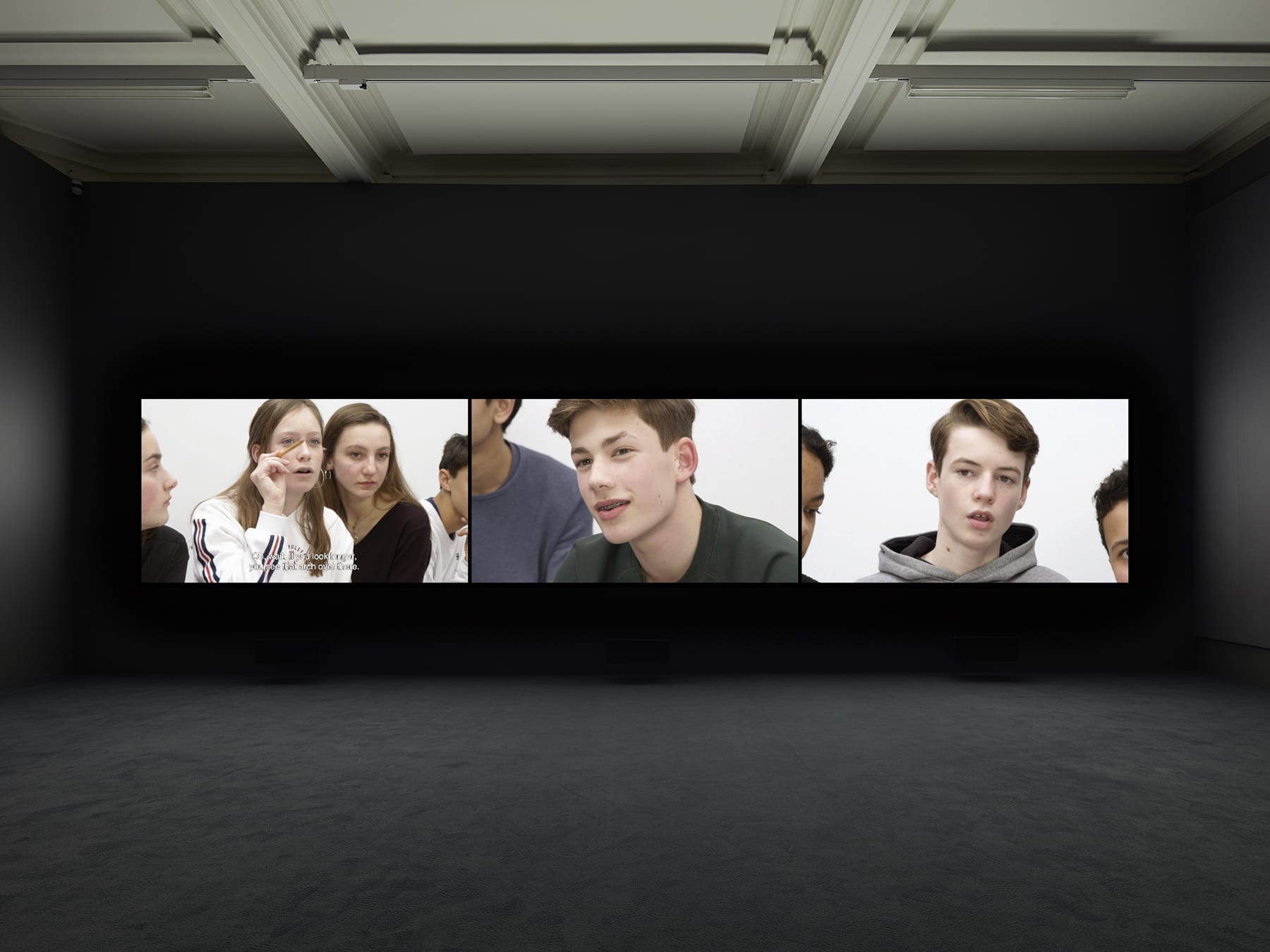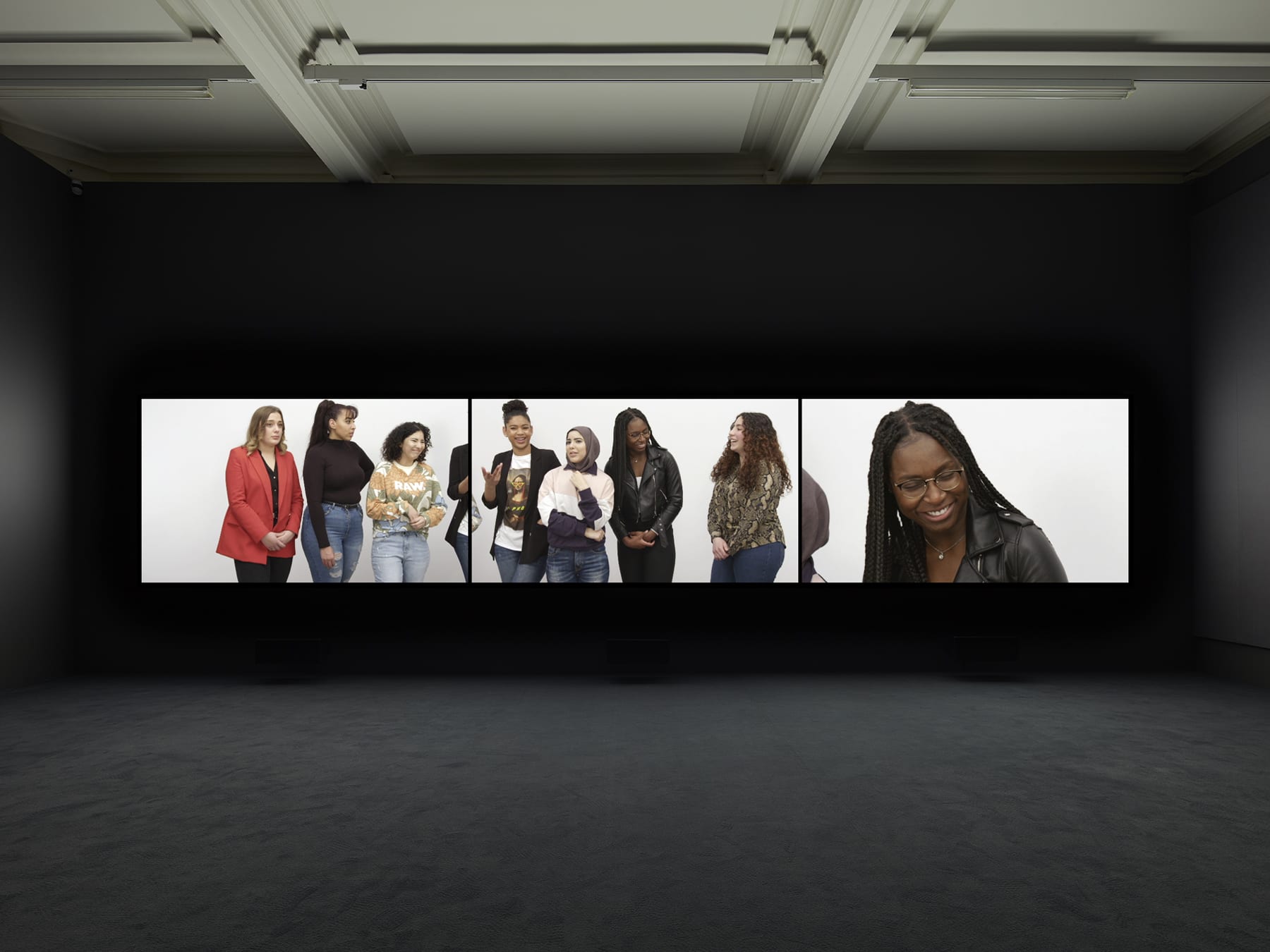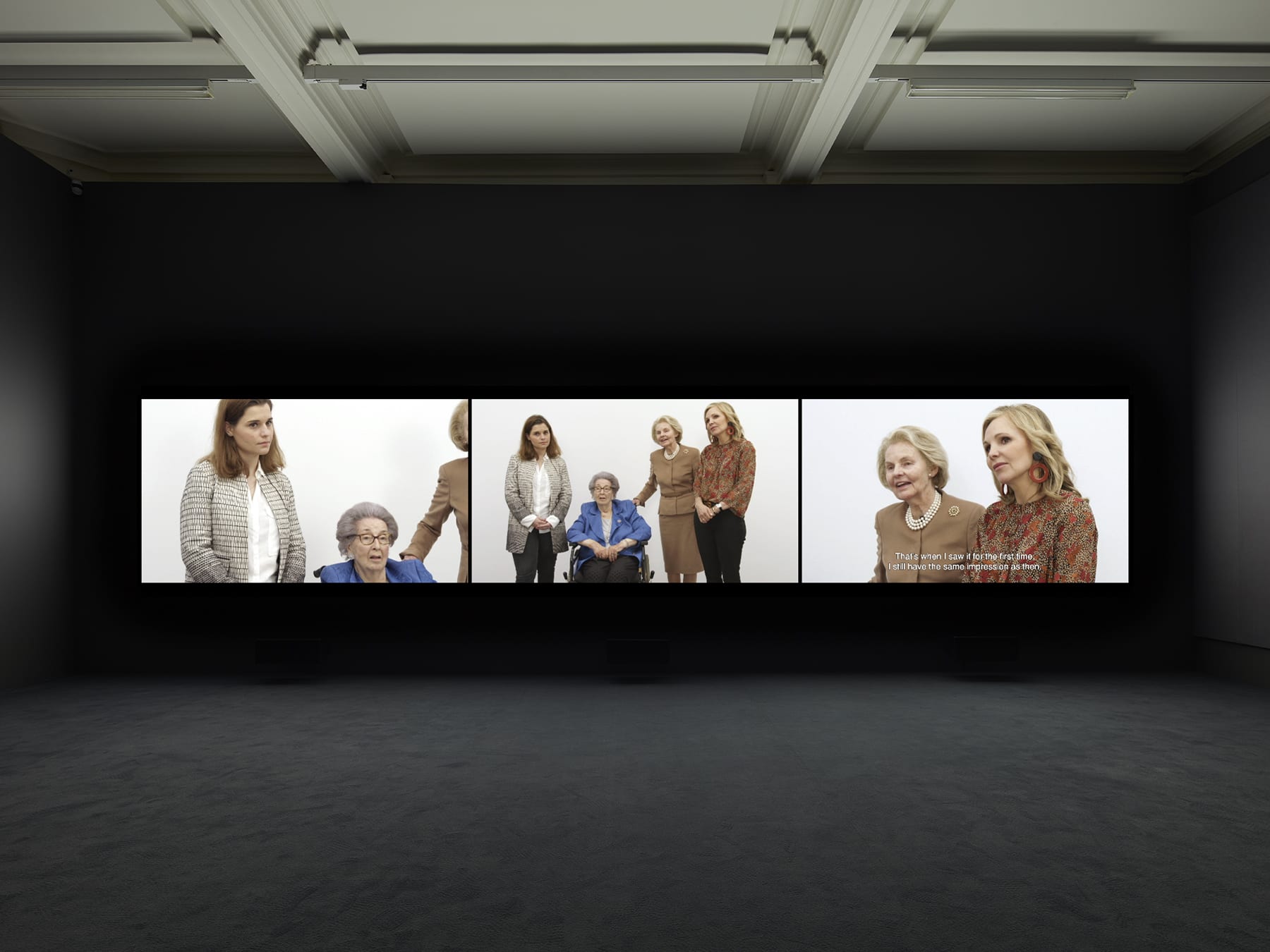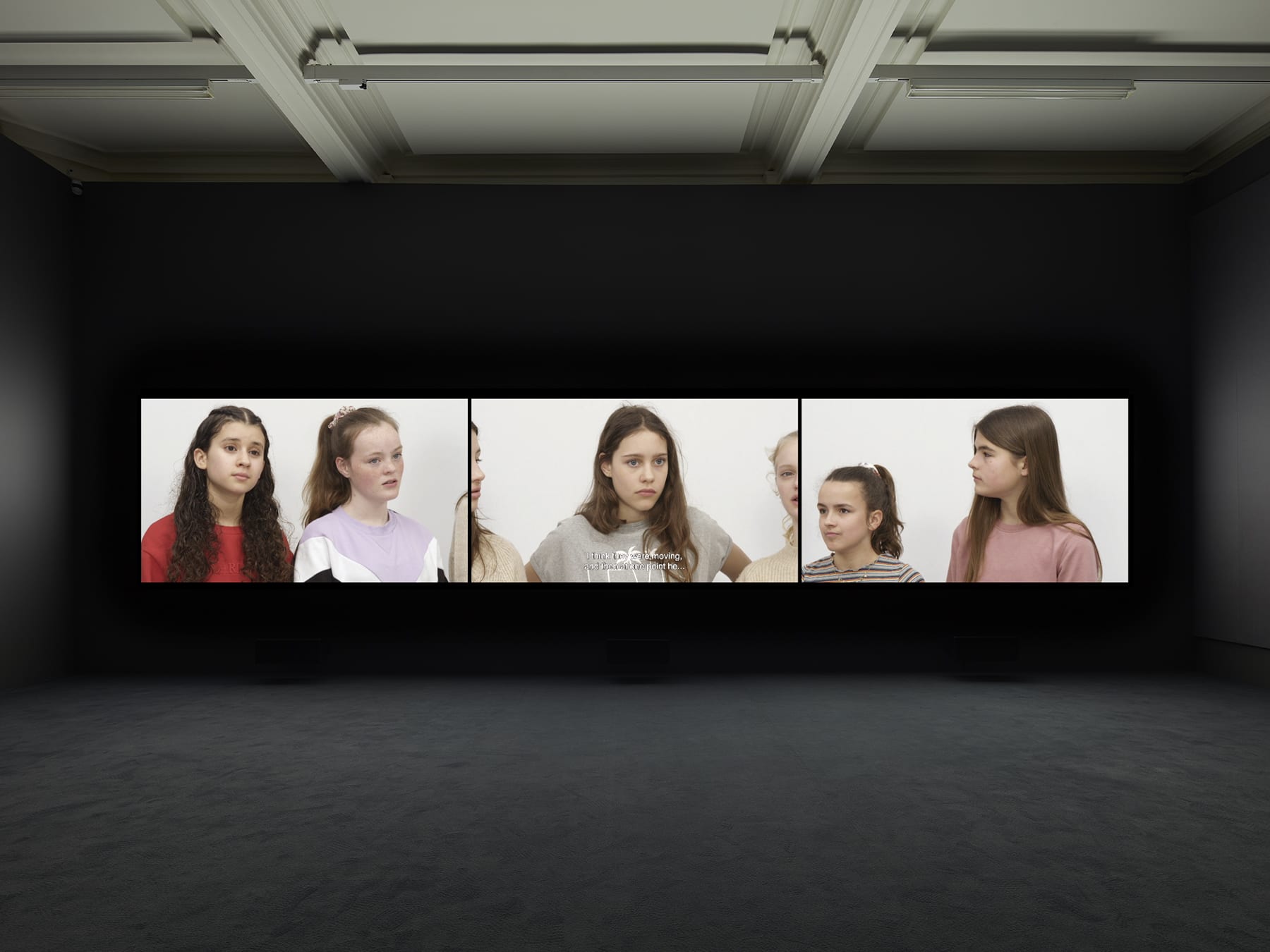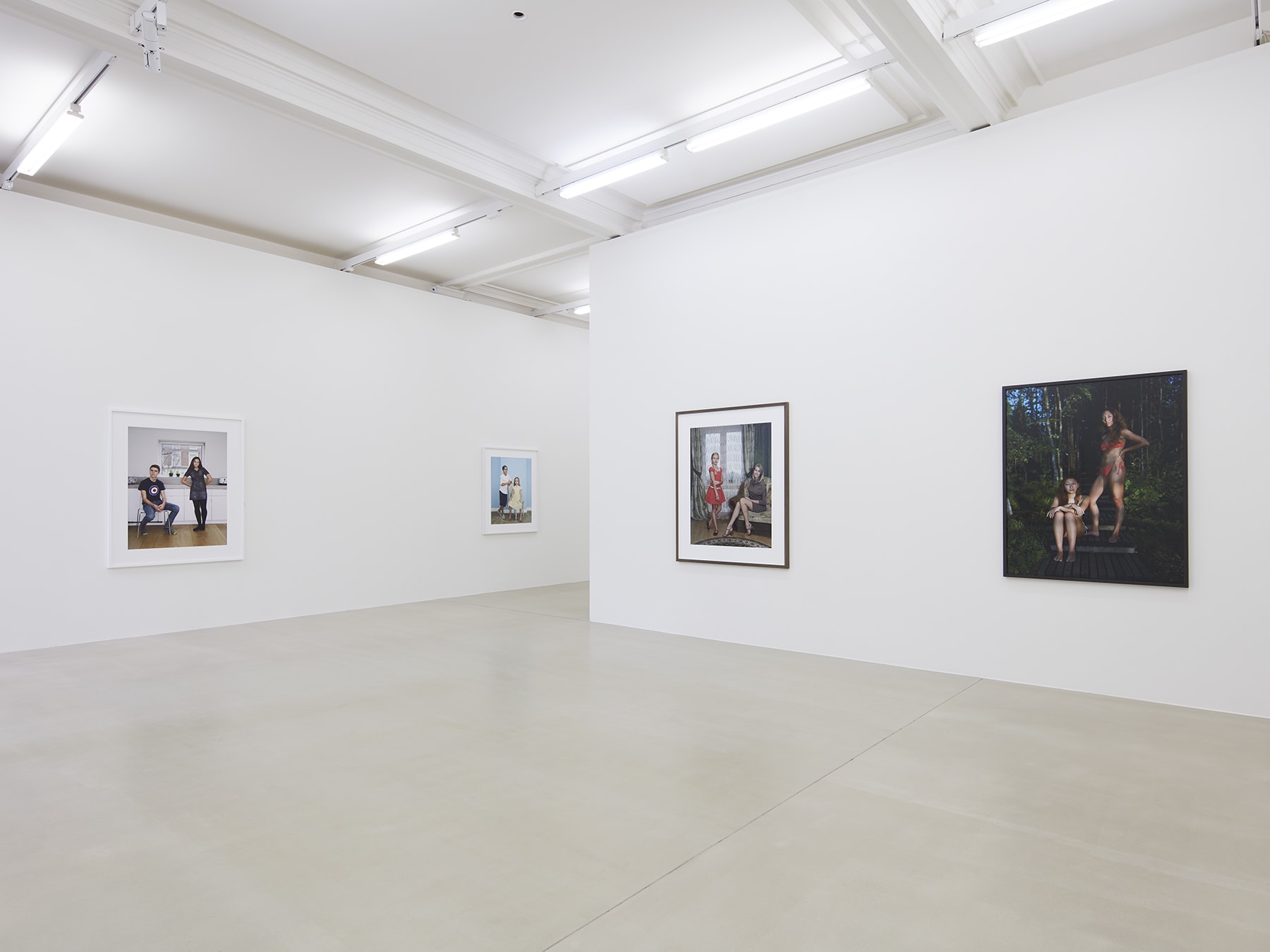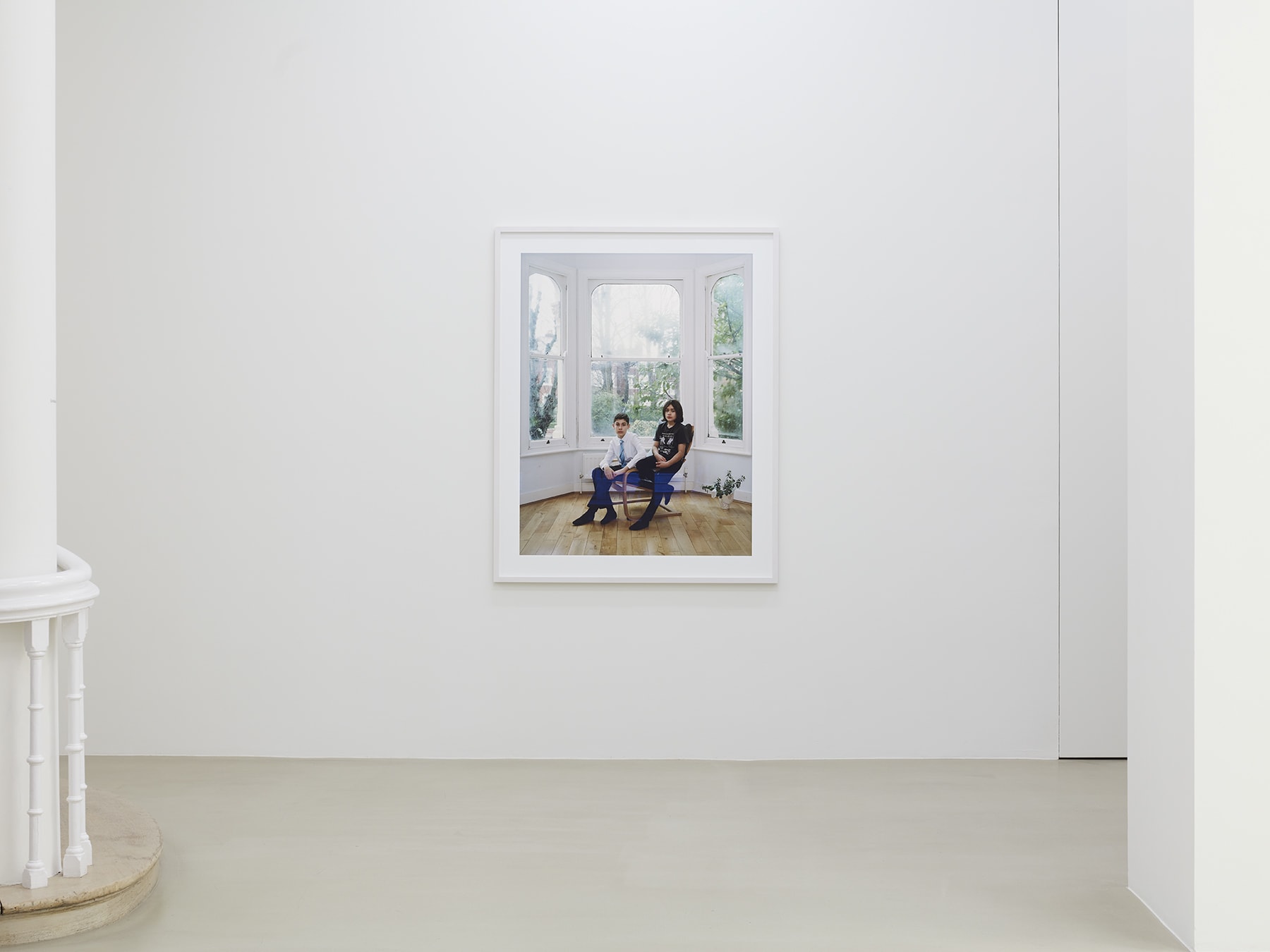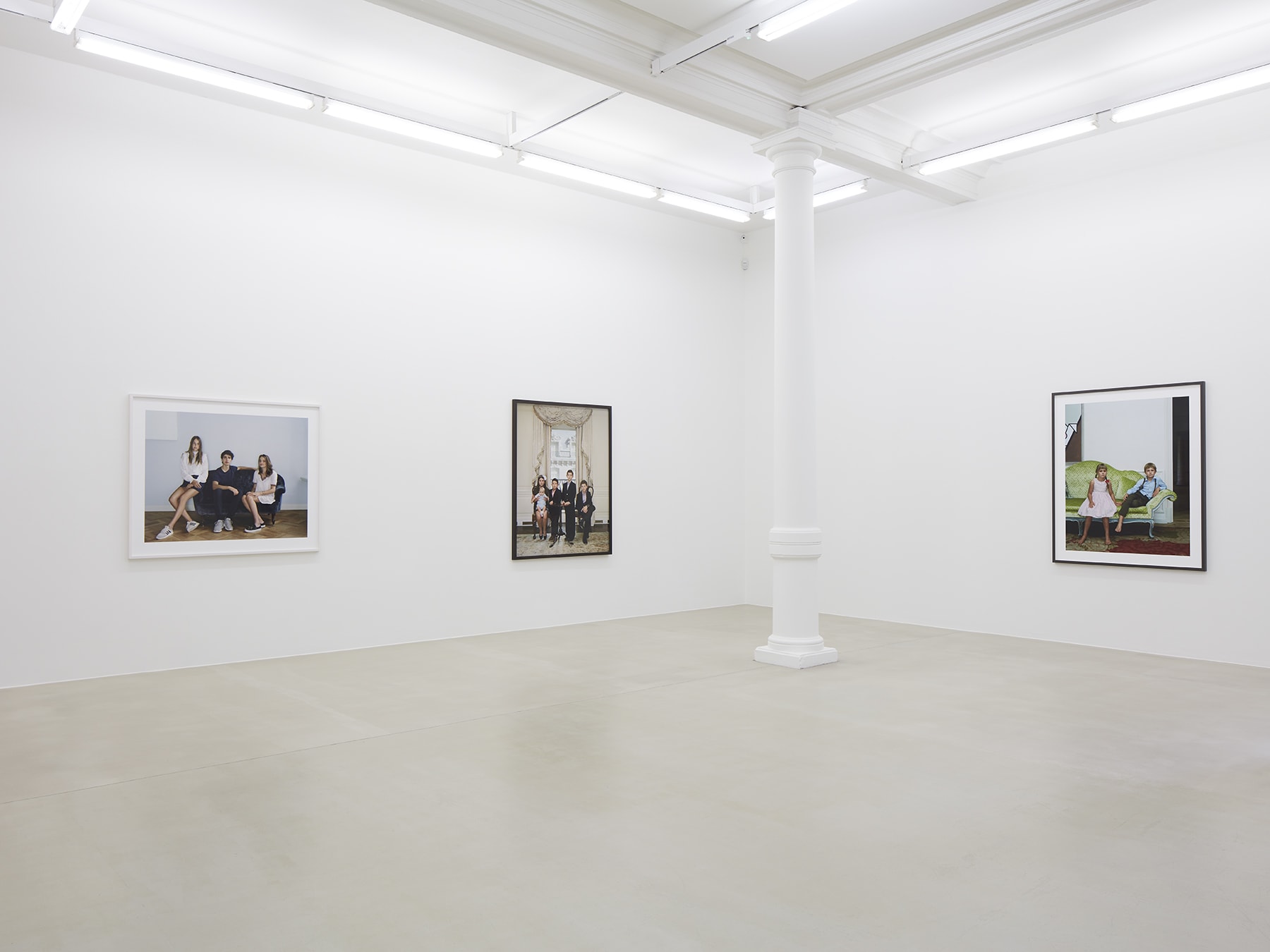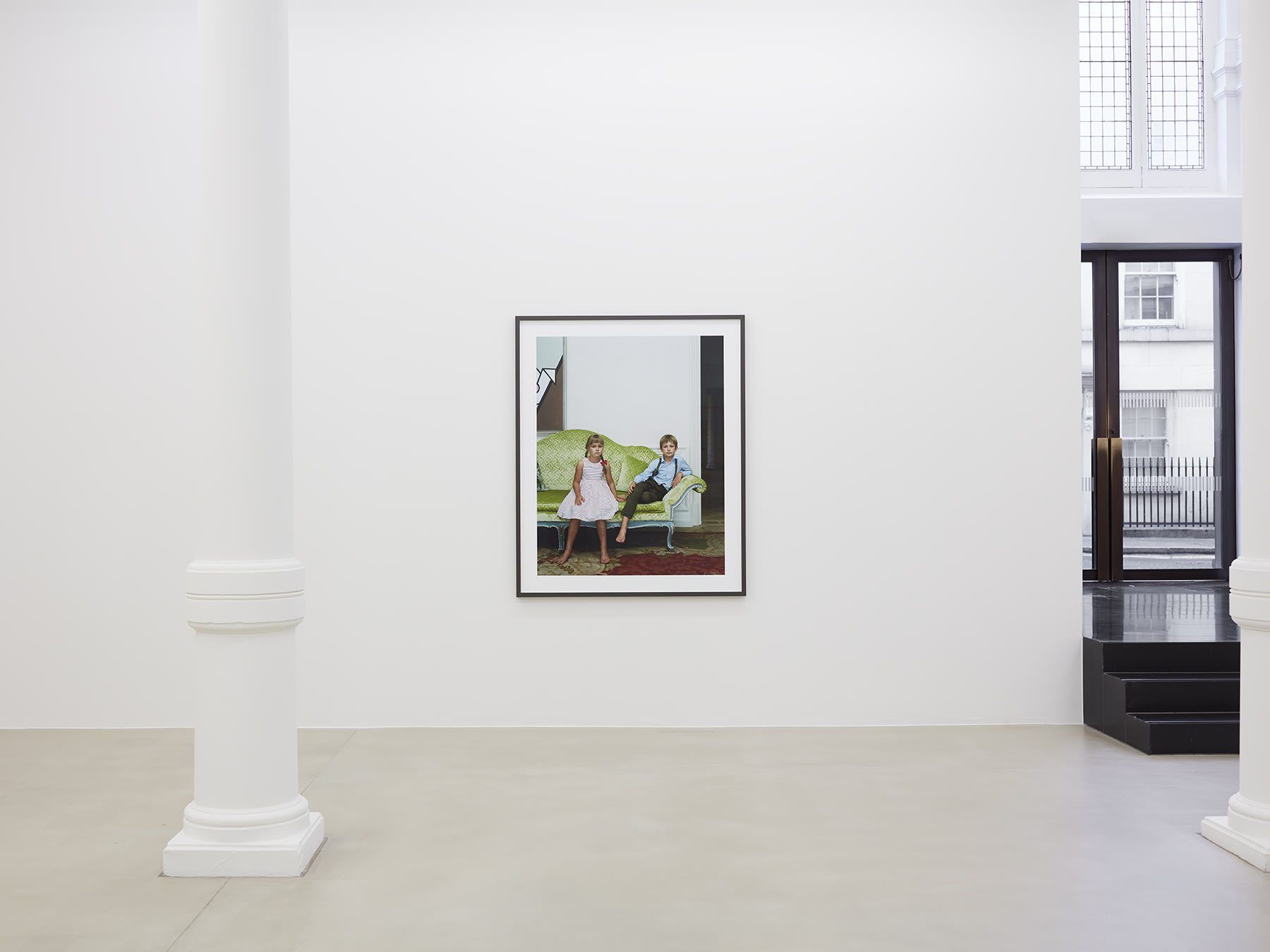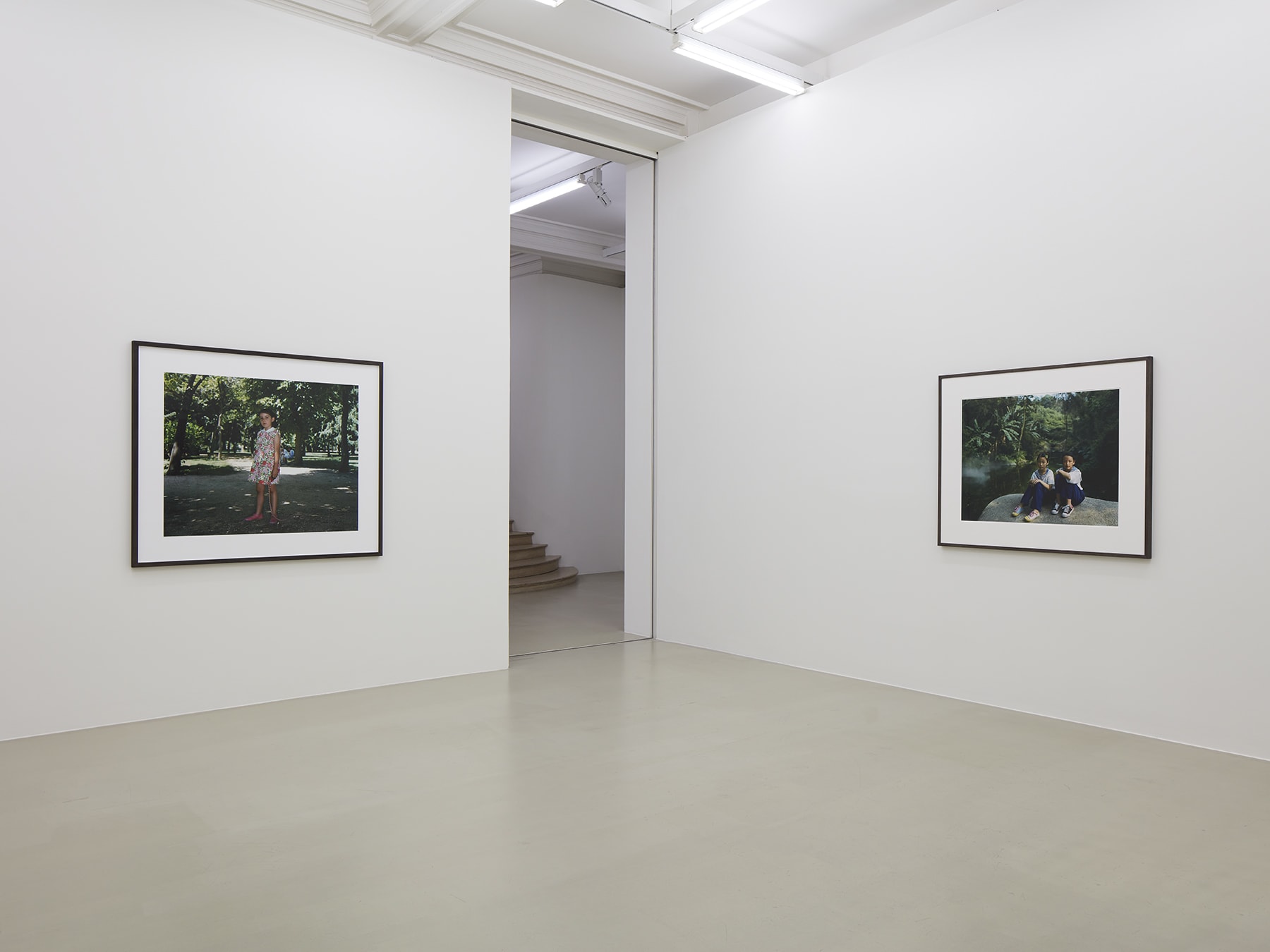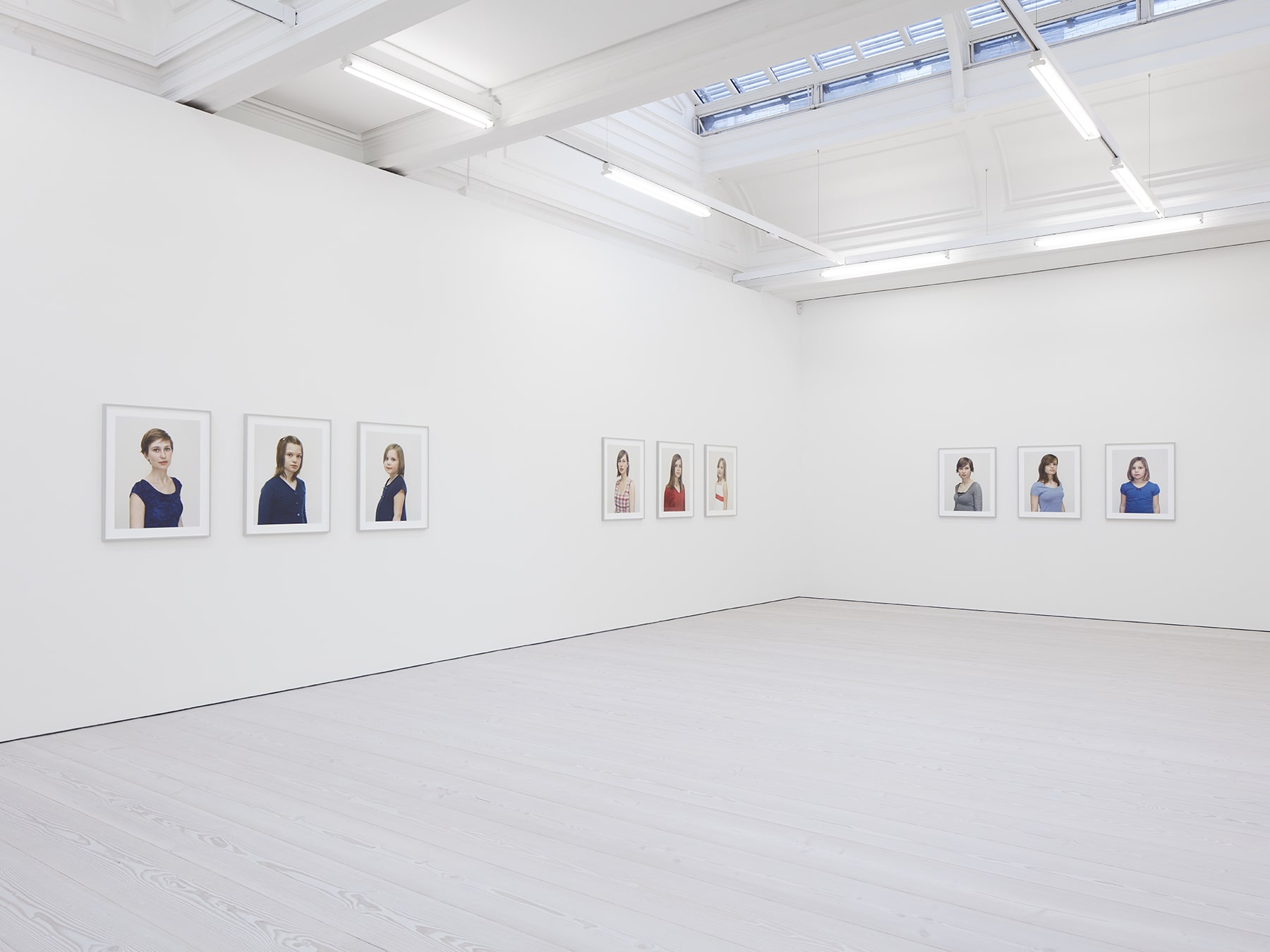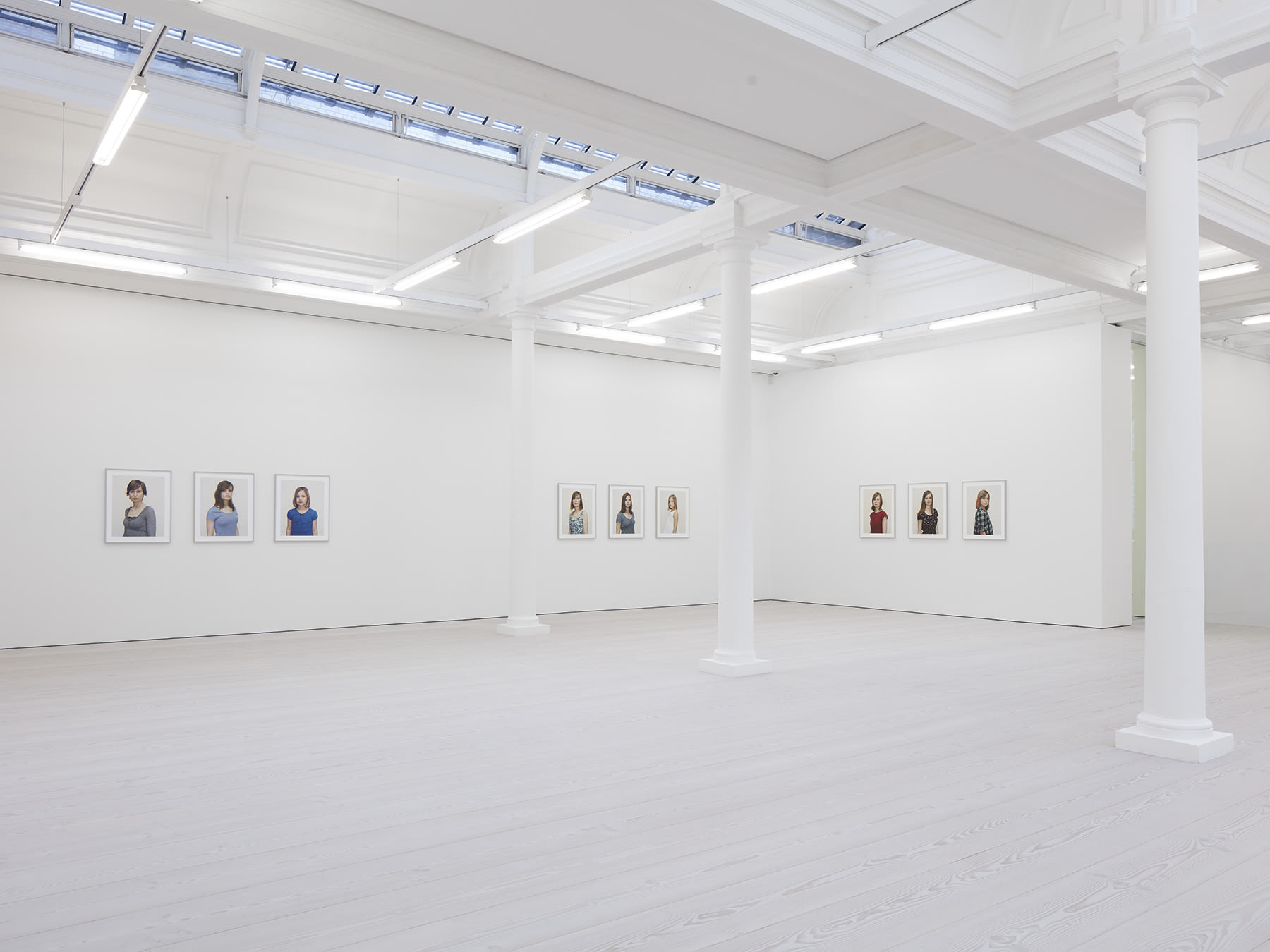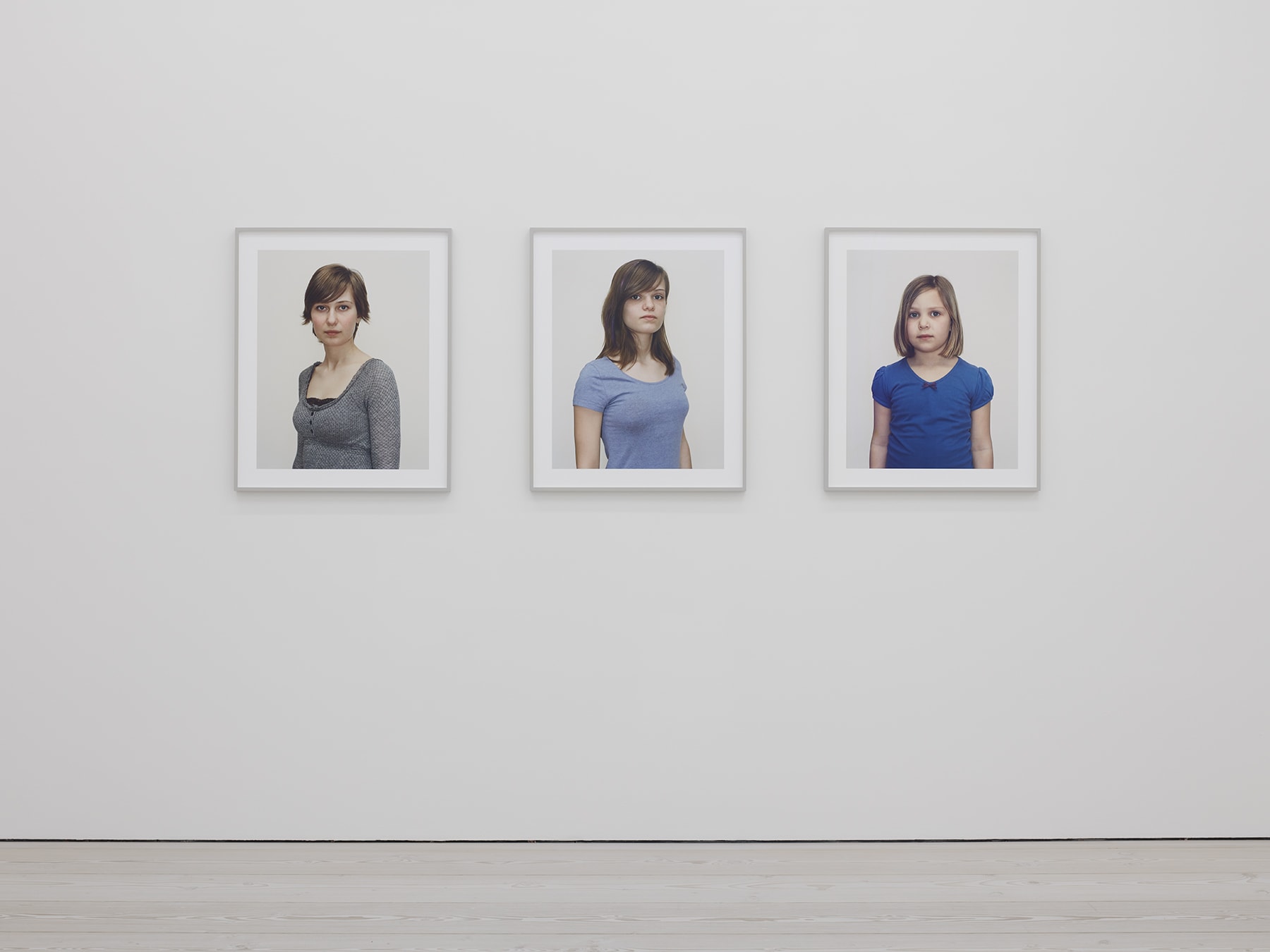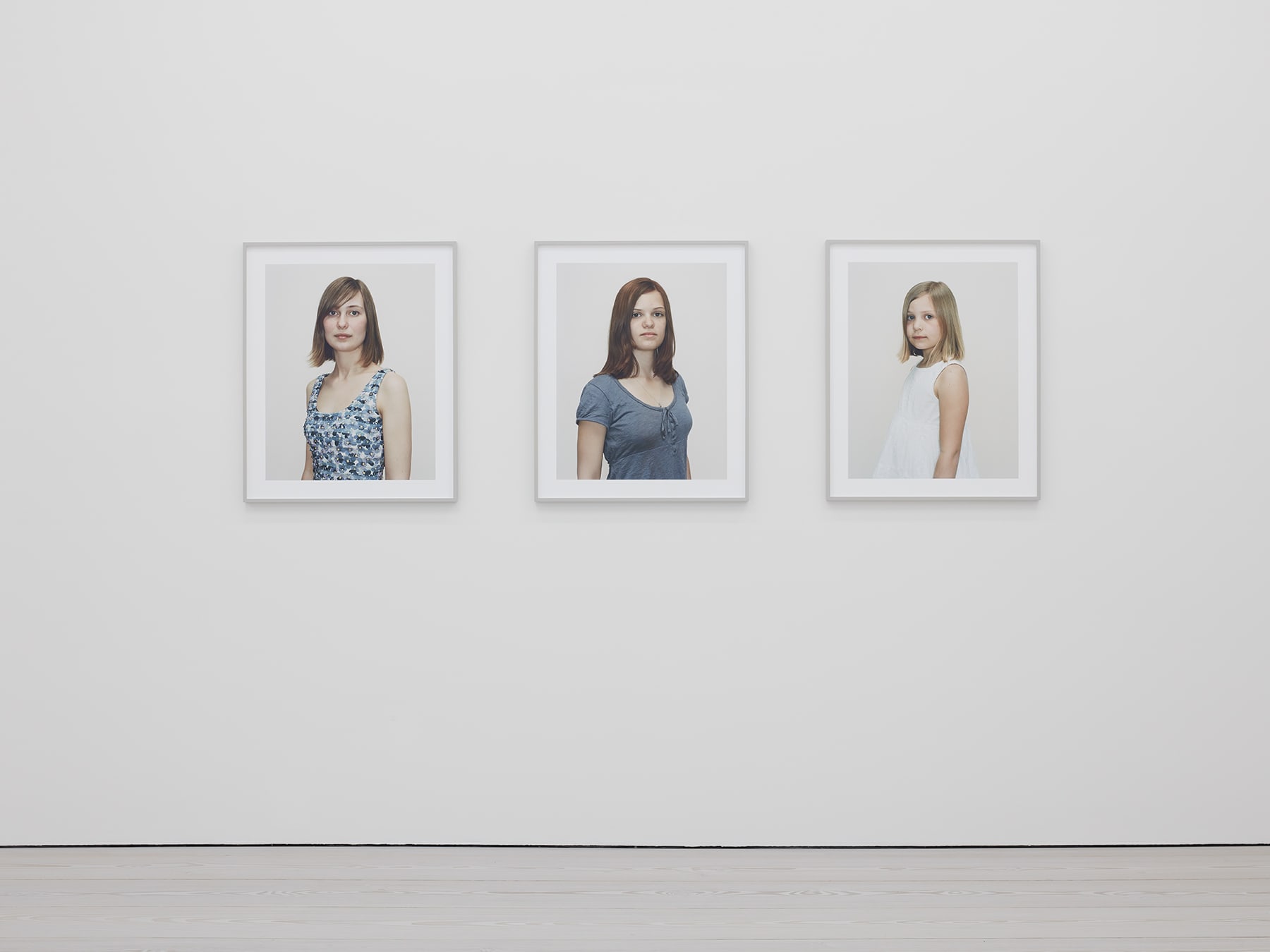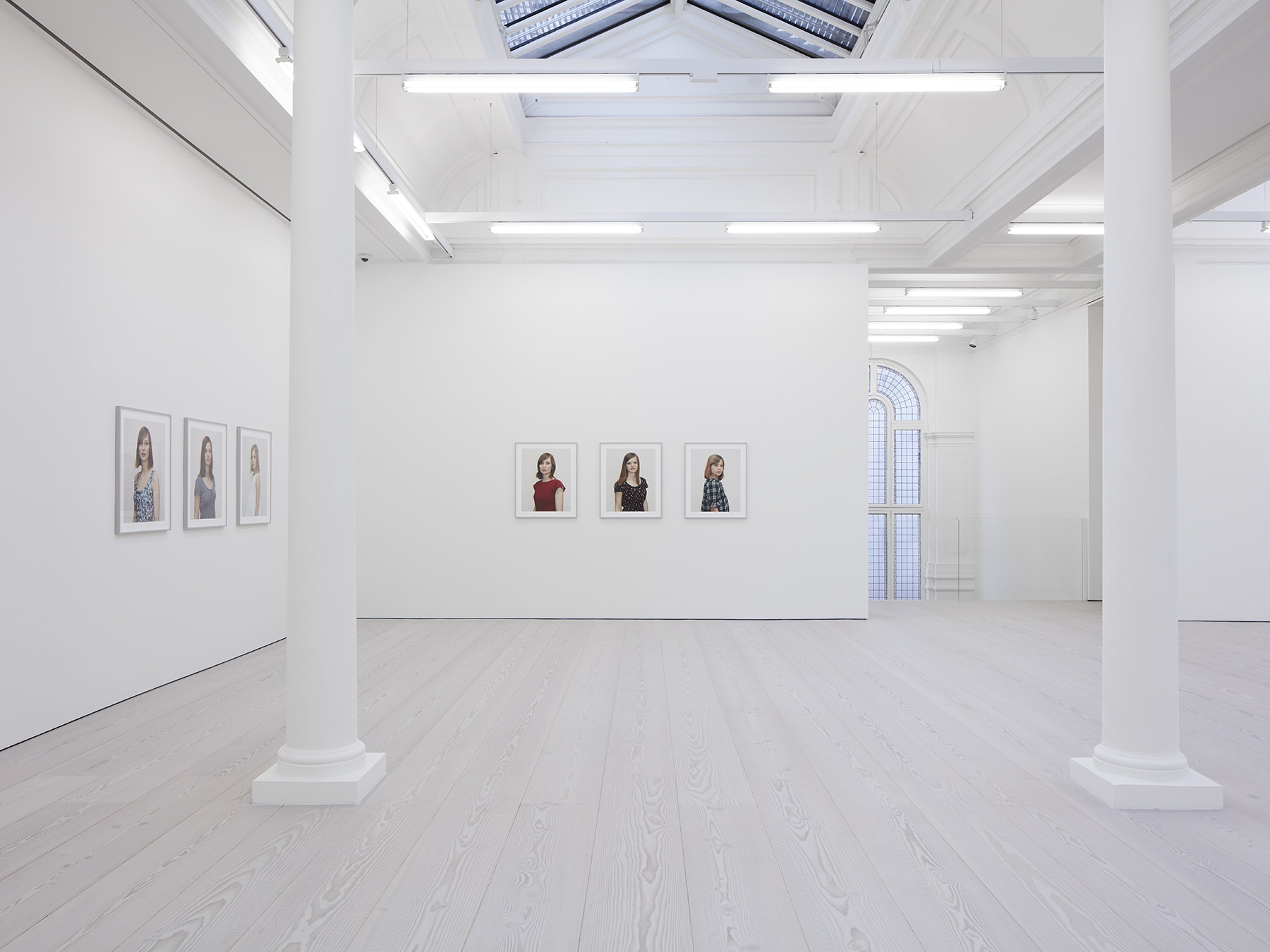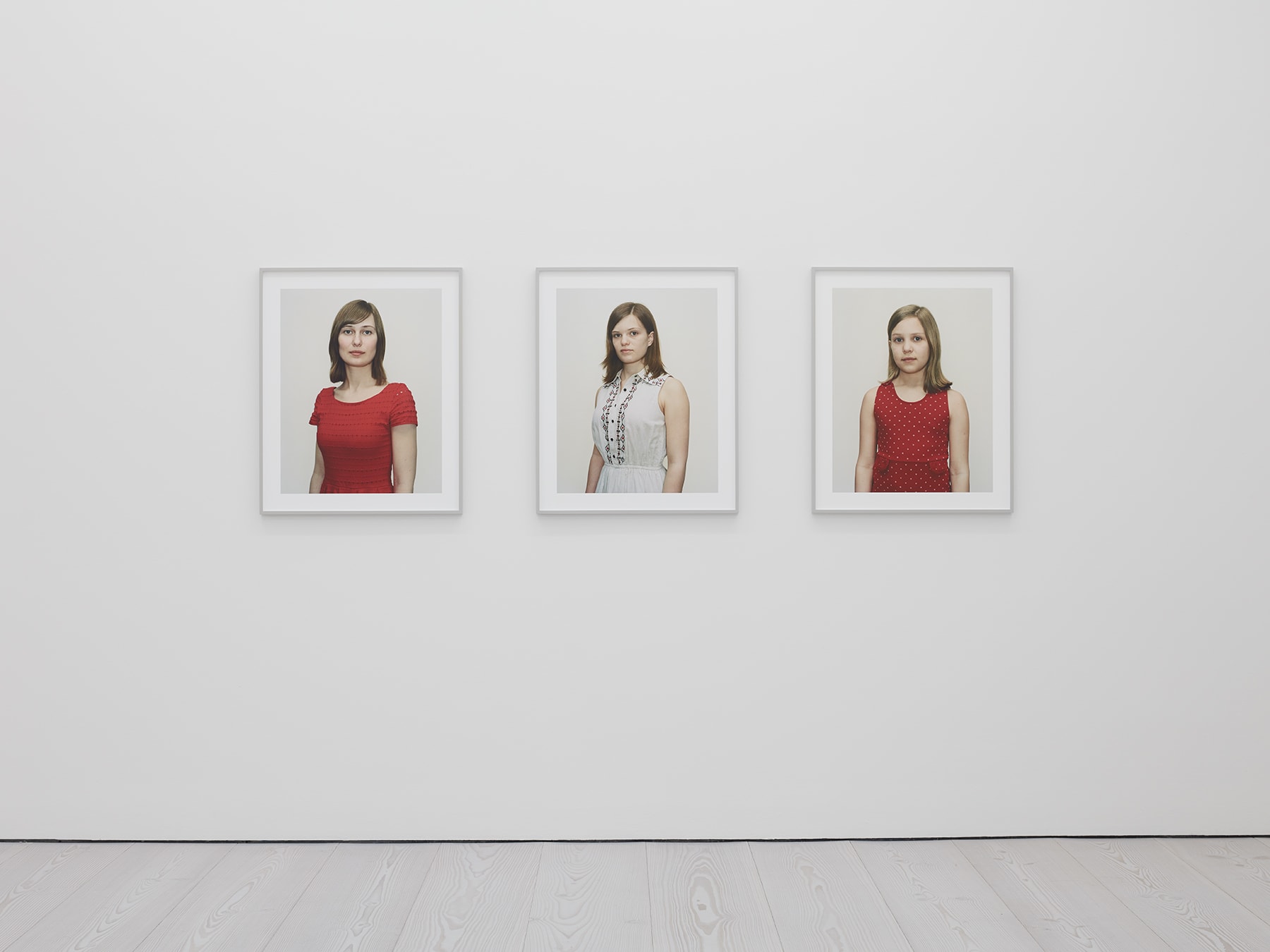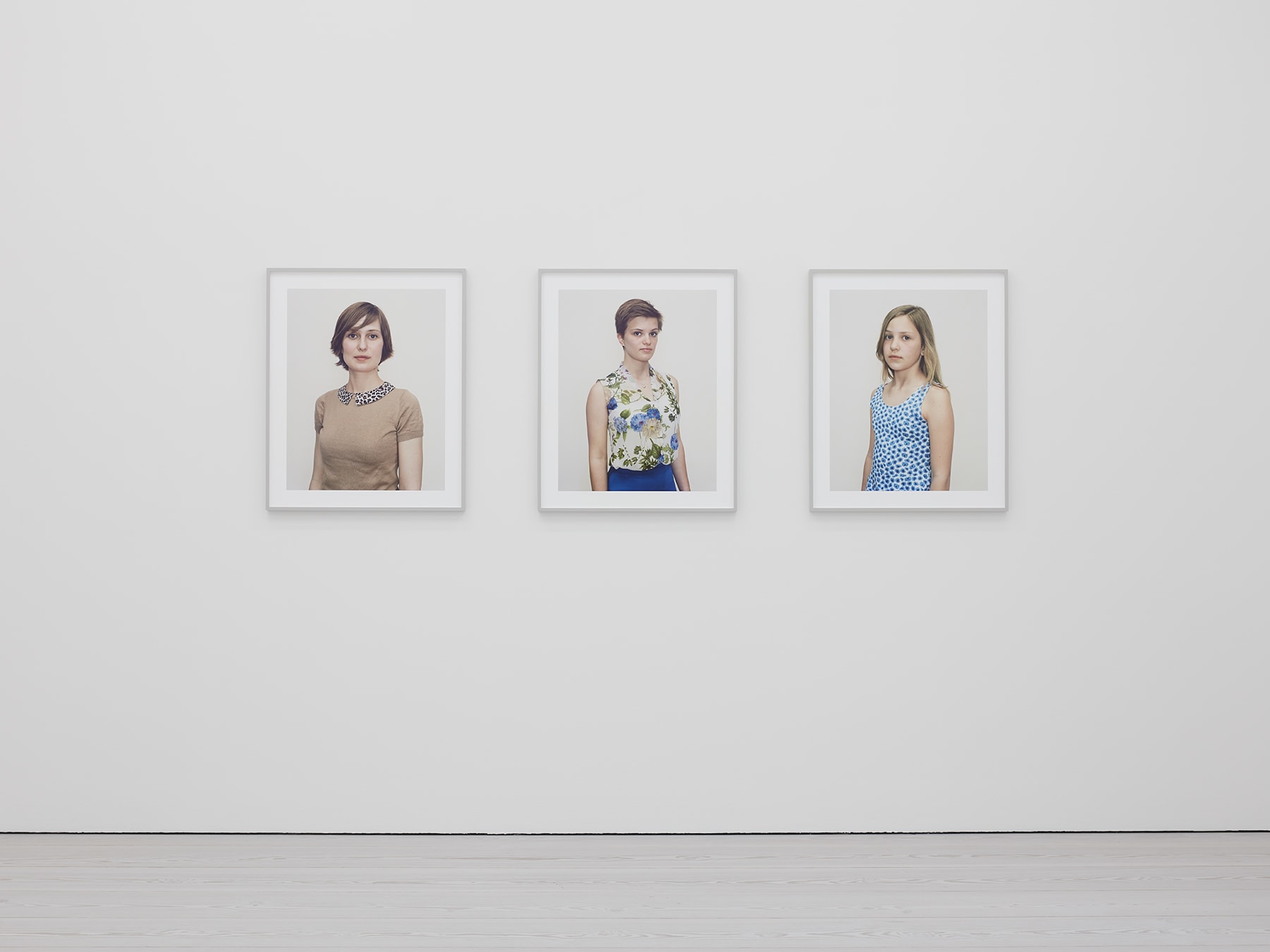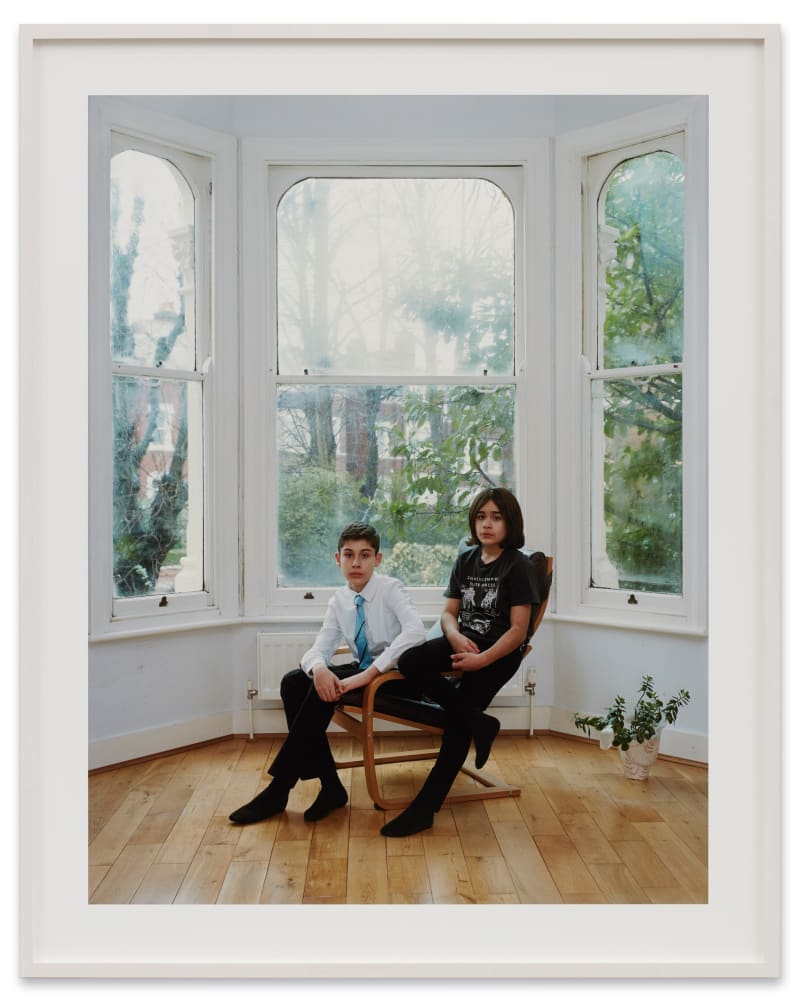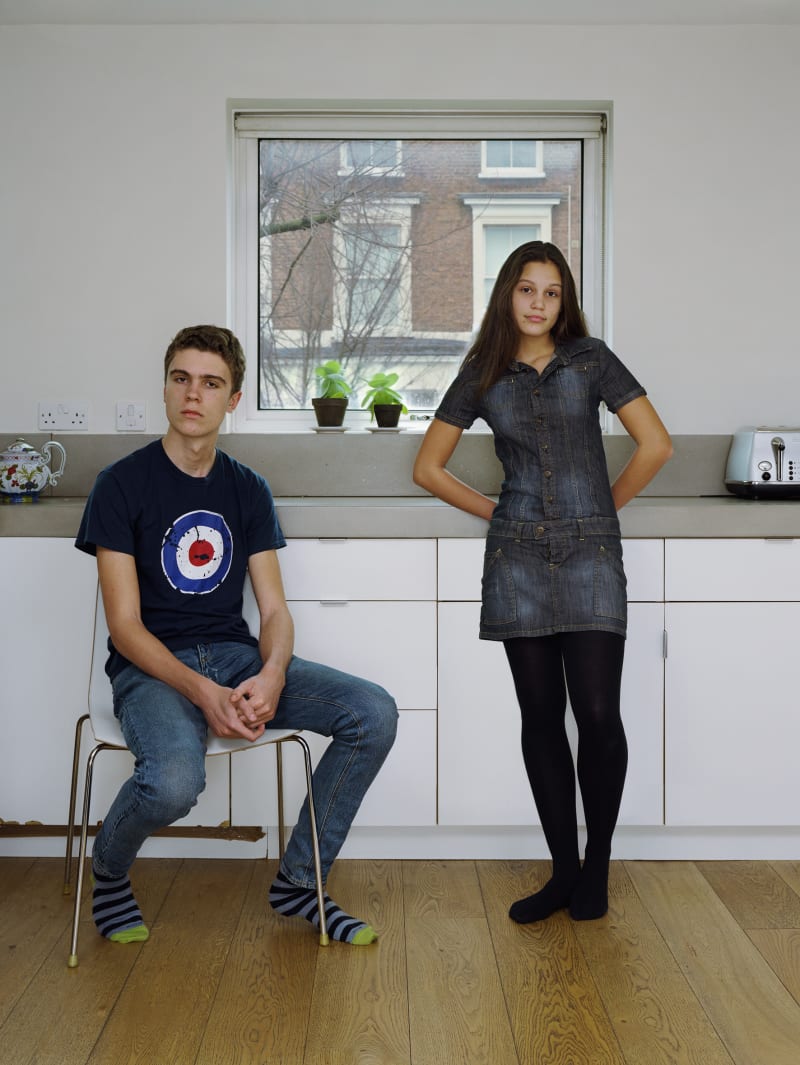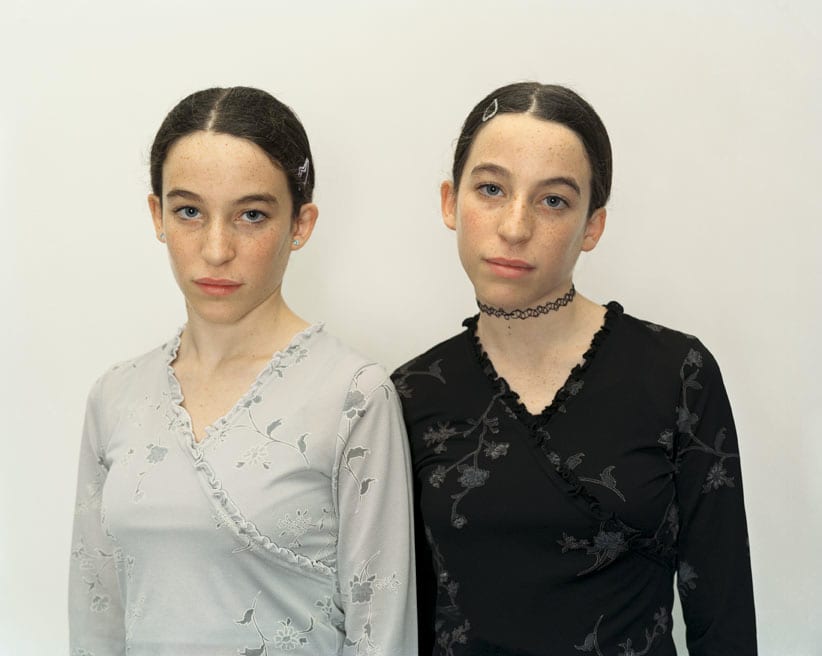Overview
Marian Goodman Gallery London is pleased to present the first UK solo exhibition of Rineke Dijkstra since 2010. The exhibition will include the UK premiere of Night Watching (2019), a video installation commissioned and first shown at the Rijksmuseum in Amsterdam in 2019. Dijkstra will also present a selection of works from a number of recognised photography series, including Family Portraits (2012–), Chen and Efrat (1999–2005) and Emma, Lucy, Cecile, (Three Sisters) (2008–2014).
Night Watching (2019), a three-screen video installation, features 14 different groups of people observing and speaking in front of Rembrandt's large iconic painting The Night Watch (1642). Each group’s conversation varies from visual descriptions to conjectures on the circumstances in which the painting was created. A group of Dutch schoolgirls discuss whether Rembrandt gave the only woman in the painting the face of his wife Saskia; Japanese businessmen consider the painting’s potential for tourism; and a group of young artists discuss what it must feel like to make such an incomparable masterpiece. The scenes in the video are sequenced to explore the different ways a viewer might relate to a painting and its subject.
Marian Goodman Gallery London is pleased to present the first UK solo exhibition of Rineke Dijkstra since 2010. The exhibition will include the UK premiere of Night Watching (2019), a video installation commissioned and first shown at the Rijksmuseum in Amsterdam in 2019. Dijkstra will also present a selection of works from a number of recognised photography series, including Family Portraits (2012–), Chen and Efrat (1999–2005) and Emma, Lucy, Cecile, (Three Sisters) (2008–2014).
Night Watching (2019), a three-screen video installation, features 14 different groups of people observing and speaking in front of Rembrandt's large iconic painting The Night Watch (1642). Each group’s conversation varies from visual descriptions to conjectures on the circumstances in which the painting was created. A group of Dutch schoolgirls discuss whether Rembrandt gave the only woman in the painting the face of his wife Saskia; Japanese businessmen consider the painting’s potential for tourism; and a group of young artists discuss what it must feel like to make such an incomparable masterpiece. The scenes in the video are sequenced to explore the different ways a viewer might relate to a painting and its subject. The first groups speculate about what they are seeing: for instance, a dog painted in a vague manner, or an illuminated girl. They are followed by groups who link similar observations to their own personal lives, making comparisons between past and current society. The final groups examine the painting within an art historical context.*
Dijkstra filmed Night Watching in the Rijksmuseum's Gallery of Honour on six evenings after closing time directly in front of Rembrandt’s The Night Watch, so that the participants would have a personal and close encounter with the painting. When exhibited at the Rijksmuseum, Night Watching was installed in a room adjacent to The Night Watch, offering visitors an opportunity to revisit the painting. In a broader context, however, Dijkstra’s Night Watching offers us the occasion to engage in and reflect on the conversational and social nature of learning about and discussing art, and the importance of storytelling in the creation of meaning, culture and history. These subjects were similarly explored in Dijkstra’s 2009 video installation I See a Woman Crying which features British schoolchildren looking at and discussing Picasso’s painting The Weeping Woman (1937) at Tate Liverpool.
Rineke Dijkstra is most known for her photographic portraits. In particular, she is known for foregrounding the intimacy of the photographic medium: how time is embodied to reveal transitory moments or passages of change; how exchange between sitter, photographer and spectator is both contingent and resonant; and photography’s revelation and reflection of the self. It will include six works from the ongoing Family Portraits series, which began as a series of private commissions in 2012. In this series, young siblings are depicted in their family homes. Their parents are never in the images. Dijkstra directs the children to pose with no particular facial expression, to be natural in front of the camera whilst aware that a portrait is being made.
The series Emma, Lucy, Cecile, (Three Sisters) (2008-2014) will be presented in its entirety on the upper floor of the gallery. Dijkstra photographed three sisters in Amsterdam once a year for seven years, the duration of the project determined by the age interval between each of the sisters, which is almost exactly seven years. The artist invites us to follow her subjects as they transform over time. The clarity and honesty that mark them are the result of her ability to create a sincere emotional connection with the individuals she photographs or films, often working with the same subjects over many years. Dijkstra presents the works side by side in chronological age order, enabling us to see a variety of stages of adolescence and maturity. In addition, a series of five photographs will be on display entitled Chen and Efrat (1999 – 2005). Portraits of a pair of Israeli twins captured over six years, the works show the twins’ transformation from children, through puberty, to adulthood.
Rineke Dijkstra was trained at the Gerrit Rietveld Academy, Amsterdam. Her first solo exhibition took place in 1984 at de Moor in Amsterdam. Dijkstra's photographs have appeared in numerous international exhibitions, including the 1997 and 2001 Venice Biennale, the 1998 Bienal de São Paulo, Turin's Biennale Internationale di Fotografia in 1999 and the 2003 International Center for Photography's Triennial of Photography and Video in New York; Manifesta 10, St. Petersburg (2014); When Home Won’t Let You Stay: Migration through Contemporary Art, ICA, Boston in 2019.
Solo exhibitions of her work have been shown at de Pont, Tilburg, the Netherlands (2018); Louisiana Museum of Art, Denmark (2017); Hasselblad Center, Gothenberg (2017); National Gallery of Art, Washington D.C. (2016); San Francisco Museum of Modern Art, San Francisco, and Guggenheim Museum, New York (2012); Tate Liverpool (2010), Fotomuseum Winterthur, Switzerland, Jeu de Paume, Paris and Stedelijk Museum, Amsterdam (2005-6), and the Art Institute of Chicago, Chicago (2001). She is the recipient of a number of awards, including the Spectrum Internationaler Preis für Fotografie der Stiftung Niedersachsen (2018), the Hasselblad Foundation International Award (2017), Citibank Private Bank Photography Prize – now Deutsche Börse Photography Prize – (1998), Werner Mantz Award (1994).
For further information, please contact Charlie Nia Dunnery McCracken at charlie@mariangoodman.com or +44 (0)20 7099 0088.
For all press enquiries, please contact Rosanna Hawkins at Rees & Co: Rosanna@reesandco.com or +44 (0)20 3137 8776.
* Citing text by Hans den Hartog Jager on the work Night Watching
